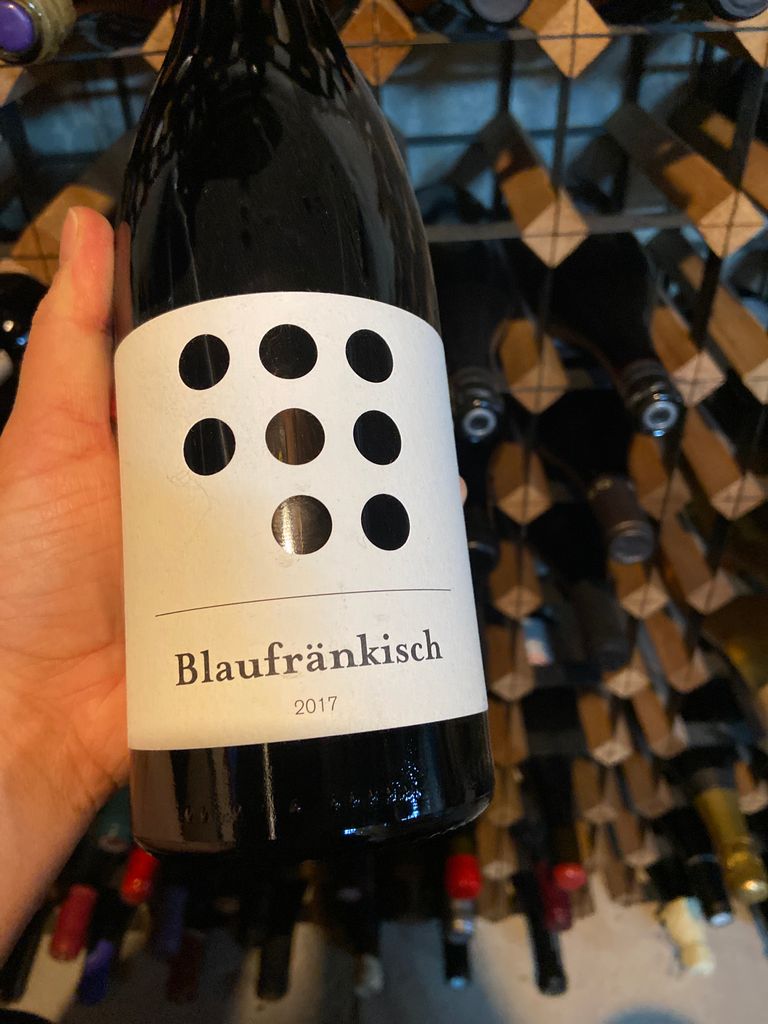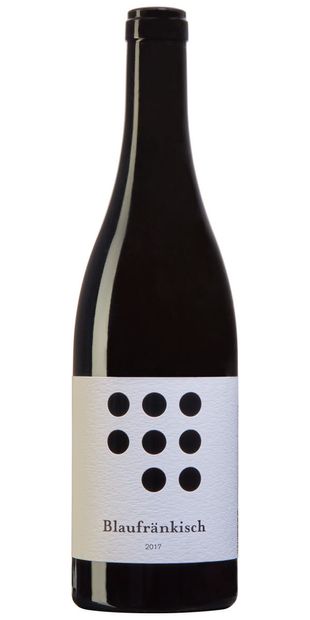Professional reviews have copyrights and you can view them here for your personal use only as private content. To view pro reviews you must either subscribe to a pre-integrated publication or manually enter reviews. Learn more.
Manage Subscriptions2017 Weninger Blaufränkisch
Blaufränkisch
- Austria
- Burgenland
- Mittelburgenland













Community Tasting Notes 5
-
chrisbunnyperk@netscape.net Likes this wine: 93 points
July 23, 2021 - Ah Austria, the land of Wolfgang Amadeus Mozart, Johann Strauss, Wiener Schnitzel, Sigmund Freud, Alpine architecture and ummm, Blaufrankisch? Given these options most would have little difficulty selecting a non sequitur. Yet before one waxes overly much on the seemingly obvious, perhaps just a bit of equivocation might be prudent. During the last interglacial warm period (from 5-10 thousand years ago), the fruit of the vine crept its way northwest along the Danube River into modern day Austria. By 700 BC Celts were already engaging in a crude type of viticulture. Like most else the incursion of the Romans in the 1st century BC changed everything. The Romans systematized a national wine growing operation and, most importantly to today’s discussion, initiated a burgeoning wine movement into the vicinity of Lake Neusiedl, an area straddling today’s Austrian-Hungarian border. For two thousand years, through invasions, religious denunciations and bungling bureaucracies this antediluvian wine enterprise has persevered. It is also here that the Weninger clan stakes it terroir.
The Weningers began their wine production as part of a larger farming operation in 1828. In modern times Franz Ludwig Weninger took over the operation in 1983 and transformed its focus exclusively into viticulture. Over the course of the next 28 years Franz Sr. expanded his acreage around his Horitschon base as well as adding additional hectares in nearby western Hungary. As tends to be the way of things, Franz Sr.’s profound interest in organic farming kindled a similar passion in his son, Franz Reinhard, who took over operations from his father after graduating from the prestigious Klosterneuburg Wine Institute (Federal College of Viticulture, Oenology and Fruit Growing) and traveling the world on internships (California and Australia). Franz Jr., however, felt something missing from their organic approach. He became fascinated with the machinations of biodynamic farming and in applying those holistic principles has taken his Demeter certified vineyards to an astonishing new level.
Local cover crops were introduced to his non irrigated vineyards both to function as nitrogen “fixers” and as habitat for benevolent insects. Further, in an effort to promote a “living” soil, Franz Jr. introduced bees, humus and sheep while spraying locally sourced chamomile, nettle and horsetail teas on the plants to provide heightened ecological balance. Consistent with his desire to showcase an indigenous product Franz has focused on a vine first identified in 1862 but probably locally grown since sometimes in the middle ages: the Braufrankisch. As Franz puts it, “our aim is to bring the taste of the place into the bottle” and the Braufrankisch shows a phenomenal ability to do just that. It brings loam and limestone, with its depth and finesse, directly into the glass!
The 2017 Braufrankisch is hand harvested, in accordance with the rhythm of the moon, from 5-35 year old vines. This particular Braufrankisch is taken from 30 odd individual parcels around Franz’ Horitschon base and is absolutely spectacular! Hand selected grapes are harvested and spend 10 days in wooden tanks with spontaneous fermentation. The fledgling wine is then transferred to wooden barrels where it is aged for 18 months. Unfined, without filtration, it is bottled sans additives, save a tiny bit of sulphur totaling 24 mg per liter. It is medium bodied, savory, dense, and, most of all, the bearer of an august balance found in only the upper echelon of the viticultural ranks. Subtly framed tannins bolster dark, crunchy berries with a mischievous and tauntingly meaty herbal quality rounding it all out. In a way I felt drinking this wine as a 4 year old youngster bordered on the criminal. This one will only get better and better. Franz only produced 16,000 bottles of this ambrosia. Find a case if you can. Make it two. Put some down and wait a decade. Then prepare for one of the better viticultural experiences of a lifetime. -
h2o Likes this wine: 89 points
May 24, 2021 - with salmon
-
JVG wrote:
January 3, 2021 - No formal notes. Juicy and ripe and racy and delicious. Good value.
-
ste_wolf Likes this wine: 88 points
November 23, 2020 - inviting nose with red fruits, black tea.juicy palate with med high acidity and low tannin.fresh and light.medium red berry finish.
-
legarejm Likes this wine: 91 points
February 15, 2020 - Earthy, musty, blueberries and blackberries, very fresh.
Wine Definition
- Vintage 2017
- Type Red
- Producer Weninger
- Varietal Blaufränkisch
- Designation n/a
- Vineyard n/a
- Country Austria
- Region Burgenland
- SubRegion Mittelburgenland
- Appellation n/a
- UPC Code 9120007505252
Community Holdings
- Pending Delivery 0 (0%)
- In Cellars 32 (27%)
- Consumed 85 (73%)
Food Pairing
Who Likes This Wine
More About This Wine
Articles
- ProducerWeninger
- VarietyBlaufränkisch
- CountryAustria
- RegionBurgenland
- SubRegionMittelburgenland
Add Articles
- Wine2017 Weninger Blaufränkisch (add)
- FamilyWeninger Blaufränkisch (add)
- ProducerWeninger
- VarietalBlaufränkisch
- CountryAustria
- RegionBurgenland
- SubRegionMittelburgenland